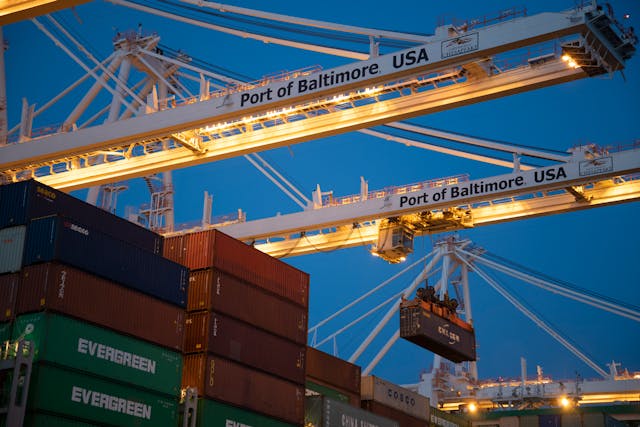Top 5 U.S. ports in 2024
 2025-01-25
2025-01-25
 28
28
As one of the largest economies in the world, the commodity trade activities in the domestic market of the United States are extremely active. According to a recent impact study by the American Ports Association (AAPA), American ports generate approximately $2.89 trillion in economic activity every year and support 21.8 million jobs. Although the Baltimore Bridge accident in early 2024 caused brief supply chain and shipping disruptions, subsequent data suggested that Container throughput at major ports rebounded quickly and continued to grow. Here's a look at the top five major U.S. ports projected in 2024 and their performance.

The Port of Houston is expected to maintain its fifth position with 3.8 million TEUs, an increase of 9% compared to 2023. The port handled 2.09 million TEU of cargo in the first half of the year, up 13% year-on-year, and reached the 3 million TEU mark in October, up 10% from the same period last year. Located in southeastern Texas, the Port of Houston is one of the most important deep-water ports on the Gulf Coast and is of great significance in promoting regional economic development. Recently, the Port of Houston received a $25 million grant from the Maritime Administration of the U.S. Department of Transportation to further improve its facilities and service capabilities.
Port of Savannah at 5.1 million TEU ranked fourth, unchanged from last year. In April, the port handled 441,000 TEU goods, an increase of 8% compared with the same period last year; In October, the monthly processing capacity exceeded 500,000 TEU, making it the third busiest month in history. Located in the eastern coastal area of Georgia, Savannah Port is one of the busiest Container on the east coast, and plays a key role in the construction of logistics networks in surrounding cities and even the entire southeastern region. Not long ago, the Georgia Port Authority announced that it would use more than $120 million in federal funds to improve the operational sustainability of Savannah and Brunswick.
The Port of New York-New Jersey remained firmly in third place, handling a total of 7.2 million TEU of cargo throughout the year. It broke through the 700,000 TEU mark in the first quarter, and reached a total of 4.2 million TEU in June, of which 708,900 TEU operations were completed in that month alone. In the following month, the port set another record, handling 806,000 TEU cargo set the busiest July in history and the seventh highest in history. New York-New Jersey Port is located in the heart of the northeastern United States, connecting the greater new york metropolitan area, one of the largest urban agglomerations in North America. It is not only an important gateway to International, but also an important engine to promote local economic growth.
The Port of Long Beach continues to rank second with 8.8 million TEUs, holding this position for two consecutive years. In August, the Port of Long Beach recorded a record monthly handling volume of 914,000 TEU as merchants stocked up in advance to cope with possible tariff increases and ongoing labor negotiations at ports on the east and west sides. September also performed well, not only setting new monthly and quarterly highs, but also achieving a growth rate of 1.5%. The Port of Long Beach is located in southern California, close to the Port of Los Angeles. Together, it forms the busiest port complex in the United States-the San Pedro Bay Port Group, which is crucial to supporting import and export trade on the West Coast and even nationwide.
The Port of Los Angeles once again retains the top spot, having handled 9.4 million TEU of cargo in the first 11 months, up 19% from the same period last year. It is particularly noteworthy that between July and September, the Port of LA has already exceeded the intended target by 18 percentage points. In October, it reached 905,000 TEU in a single month, a year-on-year increase of 25%. Located in southwest California, the Port of Los Angeles is not only the largest Container port in the United States, but also one of the busiest ports in the world. It plays an irreplaceable role in maintaining efficient and smooth sea channels between the two sides of the Pacific Ocean. Recently, the U.S. Environmental Protection Agency's Clean Port Project provided an unprecedented $412 million in funding to the Port of Los Angeles to help it achieve its zero-emission transition goal.



















